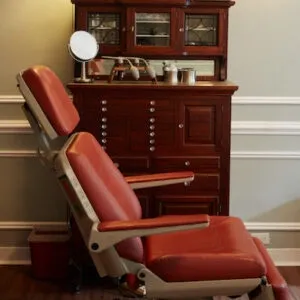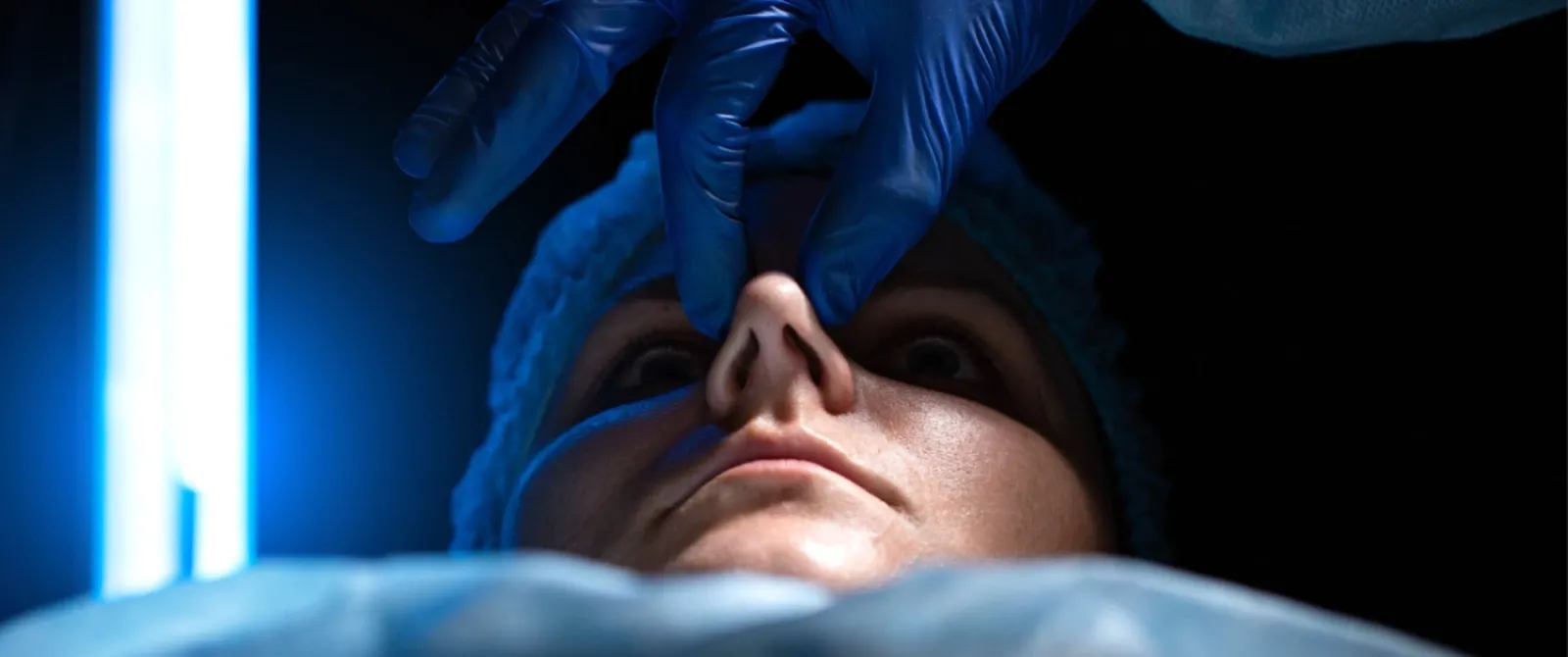Breathe well again and avoid infections with sinus surgery
With more than ten years of experience, Dr. Mourad has treated numerous patients, including many from Upper East Side, helping them find lasting relief from a wide range of sinus-related problems. These include chronic sinusitis, persistent nasal congestion, frequent headaches, and other discomforts that can significantly affect daily life. Using advanced techniques and modern medical technology, he delivers care that is carefully tailored to the specific needs of each patient. Upper East Side residents who are struggling with ongoing sinus pain or difficulty breathing can rely on Dr. Mourad to provide effective, personalized treatment designed to improve both nasal function and overall quality of life.
Book an appointment to determine if you need sinus surgery in Upper East Side
What is sinus surgery?
The internal structure of the nose is composed of multiple small cavities and interconnected passageways that communicate between both sides of the nasal passages. Sinus surgery is designed to expand these channels and carefully remove portions of the walls within these spaces, which helps to prevent blockages and allows for more effective drainage of mucus and air. By creating larger and more open sinus passages, internal pressure within the nasal cavity is reduced, and both the frequency and intensity of sinus infections can be greatly minimized. Furthermore, the enhanced accessibility of the sinus spaces makes it easier for saline rinses and topical medications to reach affected areas, improving the overall effectiveness of treatments and promoting better long-term sinus health.
What are the different types of sinus surgery?
The main surgical techniques used to enhance sinus drainage and restore proper airflow include Functional Endoscopic Sinus Surgery, often abbreviated as FESS, and Balloon Sinuplasty. In situations where revision surgery is required, or when the sinuses near critical areas such as the eyes or brain are involved, surgeons may also utilize advanced Image Guidance technology. This technology allows for highly precise and safe navigation throughout the procedure, ensuring that delicate structures are protected while the sinus passages are effectively treated.
Functional endoscopic sinus surgery (FESS)
Functional Endoscopic Sinus Surgery, commonly referred to as FESS, is the most widely performed sinus surgery procedure. During this operation, the surgeon uses an endoscope, which is a slender, flexible tube with a light and a small camera mounted at its tip. This device is carefully inserted into the nasal passages, providing a detailed and magnified view of the interior of the sinuses. Once the surgeon has a clear view, any obstructions such as nasal polyps, bone spurs, or other tissues that impede airflow and proper drainage can be gently removed. The sinus openings are then widened to promote better drainage and reduce inflammation. FESS is usually conducted under general anesthesia, and the length of the procedure can vary depending on the complexity of the individual case.
Image-guided surgery (IGS)
In certain cases, surgeons make use of a three-dimensional navigation system, which incorporates data from a CAT scan to provide real-time guidance for instruments inside the nasal cavity and sinuses. This technology allows precise identification of the exact location within the sinuses and can be used alongside Functional Endoscopic Sinus Surgery or some Balloon Sinuplasty procedures. Image guidance is especially valuable during revision surgeries or when operating on the frontal, lateral ethmoid, or sphenoid sinuses, which are located near the brain, eyes, and critical nerves and blood vessels. The use of this advanced technology enhances both accuracy and safety during complex sinus procedures.
Balloon Sinuplasty
Balloon sinuplasty is a minimally invasive procedure specifically designed to open sinus passages that are blocked and causing discomfort or chronic sinus problems. During the procedure, a flexible wire guide is carefully inserted into the larger sinus cavities, after which a small balloon catheter is advanced into the sinus opening. Once positioned correctly, the balloon is slowly and gently expanded using water, which widens the sinus passage and improves drainage. This technique can be applied to three of the four primary sinus cavities, but it does not involve the removal of infected or inflamed tissue. Balloon sinuplasty is generally not recommended for patients who have nasal polyps or disease affecting the ethmoid sinuses, as these conditions typically require more comprehensive surgical intervention.
Open Sinus Surgery
In some situations, a more traditional approach to sinus surgery is necessary. This less frequently performed procedure involves making small incisions, usually either inside the nostrils or along the upper lip, providing the surgeon with direct access to the affected sinuses. Using this method, the surgeon can remove tissue or other obstructions that cannot be addressed through less invasive techniques, offering relief for more complex sinus blockages.
Transoral Endoscopic Surgery
A newer and evolving technique called transoral endoscopic sinus surgery allows surgeons to access the sinuses through the mouth. By employing an endoscope, the surgeon can remove tissue or other obstructions that are causing infection, inflammation, or drainage issues. This method avoids external incisions, making the procedure less invasive while still offering effective drainage and relief for patients who suffer from chronic or recurrent sinus problems.
Discuss risks associated with each sinus surgery option with Dr. Mourad
It is very important for patients to recognize that there are several types of sinus surgery, and each has its own specific indications, potential advantages, and possible risks. The selection of the most appropriate procedure will be based entirely on the individual patient’s condition, nasal anatomy, and medical history. A qualified surgeon will take the time to review all available surgical options, clearly explaining the benefits, limitations, and potential complications of each approach. This careful consultation ensures that the patient is fully informed and can make a confident decision regarding whether undergoing sinus surgery is the most suitable solution for their particular situation.
When is sinus surgery required?
Acute sinusitis is defined as a sinus infection that lasts for less than one month, whereas chronic sinusitis is characterized by a persistent infection that continues despite conventional treatments such as antibiotics or steroid therapy. Both forms of sinusitis can significantly impact a person’s overall quality of life, interfering with routine daily activities and causing ongoing discomfort and distress.
Individuals who experience frequent episodes of acute sinusitis within a single year, or those who suffer from chronic sinusitis that has not improved with medical management, are generally considered strong candidates for sinus surgery. The reduction in quality of life may manifest in ways such as repeated absences from work or school, continuous symptoms that are difficult to manage, feelings of fatigue, and even emotional effects such as depression. Patients dealing with these challenges should consult with Dr. Mourad to determine if surgical intervention could provide meaningful relief and restore comfort in their daily lives.
Individuals who experience frequent episodes of acute sinusitis within a single year, or those who suffer from chronic sinusitis that has not improved with medical management, are generally considered strong candidates for sinus surgery. The reduction in quality of life may manifest in ways such as repeated absences from work or school, continuous symptoms that are difficult to manage, feelings of fatigue, and even emotional effects such as depression. Patients dealing with these challenges should consult with Dr. Mourad to determine if surgical intervention could provide meaningful relief and restore comfort in their daily lives.
Recurring infections
Some patients continue to experience sinus infections repeatedly, even after having tried a variety of standard medical treatments such as antibiotics, nasal sprays, or steroid therapies. For these individuals, sinus surgery is often recommended as a solution to improve overall sinus health, enhance drainage, and reduce the likelihood of future infections. By addressing underlying structural or anatomical issues that contribute to recurrent sinus problems, surgical intervention can provide long-lasting relief, improve the patient’s quality of life, and reduce the frequency of disruptive sinus episodes.
Chronic sinusitis
Chronic sinusitis is a condition in which the sinuses remain inflamed for an extended duration, frequently resulting in symptoms such as facial pain, pressure, persistent nasal congestion, headaches, and a reduced sense of smell. Many patients find that conservative approaches, including medications, nasal irrigation, or lifestyle changes, are insufficient in alleviating their symptoms. In these situations, surgical intervention may be necessary to remove obstructions, widen sinus passages, and restore proper sinus function. This approach allows patients to breathe more comfortably, experience fewer symptoms, and enjoy improved overall sinus health.
Nasal polyps
Nasal polyps are soft, noncancerous growths that can develop within the nasal passages or sinus openings, often causing obstruction of airflow and contributing to chronic sinus infections. Sinus surgery can effectively remove these polyps, alleviate blockage, and support healthier sinus function. By addressing these structural challenges, patients can experience relief from ongoing discomfort, reduce the occurrence of recurrent sinusitis, and enjoy a better quality of life with improved nasal breathing and overall sinus health.
Structural problems
Structural irregularities in the nasal passages, including conditions such as a deviated septum or enlarged turbinates, can create significant obstructions to airflow and interfere with proper sinus drainage. These anatomical issues often contribute to recurring or chronic sinus infections that diminish overall comfort and quality of life. In situations like these, sinus surgery may be recommended to correct the underlying structural problems, restore unobstructed airflow, and improve the functionality of the sinus passages. By addressing the root causes of blockages, surgical intervention can provide lasting relief from sinus-related discomfort, enhance breathing, and decrease the frequency of future infections.
It is important to recognize that not every sinus problem requires a surgical solution. The decision to pursue sinus surgery should be made carefully in collaboration with a qualified otolaryngologist, such as Dr. Moustafa Mourad, who brings extensive specialized knowledge in sinus surgery. Through a detailed evaluation of symptoms, review of imaging studies, and consideration of prior treatments, Dr. Mourad can determine whether surgical intervention is the best course of action for achieving sustained sinus health and improved daily well-being.
It is important to recognize that not every sinus problem requires a surgical solution. The decision to pursue sinus surgery should be made carefully in collaboration with a qualified otolaryngologist, such as Dr. Moustafa Mourad, who brings extensive specialized knowledge in sinus surgery. Through a detailed evaluation of symptoms, review of imaging studies, and consideration of prior treatments, Dr. Mourad can determine whether surgical intervention is the best course of action for achieving sustained sinus health and improved daily well-being.
Get sinus surgery in Upper East Side
What is a sinus infection (Sinusitis)?
The nasal passages are composed of a complex network of interconnected cavities responsible for the drainage of mucus into the nose and throat. When these sinus cavities become inflamed, swollen, or obstructed, it creates a favorable environment for infection to develop. Sinus infections, also referred to as sinusitis, can be triggered by a variety of factors including viral illnesses such as the common cold, allergic reactions including allergic rhinitis, or structural abnormalities like a deviated septum. Individuals experiencing sinus infections often notice symptoms such as persistent facial pressure or pain, headaches that do not subside, thick green or yellow nasal discharge, severe congestion, and general feelings of fatigue. In many cases, viral sinus infections improve within several days when sufficient rest is taken, proper hydration is maintained, and supportive nutrients such as Vitamin C are included in the diet. However, if symptoms continue for more than a week or intensify suddenly, it may indicate that a bacterial sinus infection has developed, making prompt medical evaluation critical to prevent complications and ensure proper treatment.

How do I treat my sinus infection?
In the early stages of a sinus infection, it is beneficial to maintain adequate hydration, obtain ample rest, limit the intake of stimulants such as caffeine, avoid alcohol, and gently rinse the nasal passages using a saline solution, for example with a Neti pot. Supporting the immune system with Vitamin C can also aid recovery. If symptoms persist beyond one week or if there is a sudden increase in the severity of headaches, thickened nasal discharge, or a noticeable change in color, these may be signs of a bacterial infection requiring antibiotic treatment. A physician can prescribe antibiotics that target the specific bacteria likely causing the infection. Additionally, your doctor may recommend topical or oral steroids to reduce inflammation and promote faster healing within the sinus cavities. Consulting an otolaryngologist is highly recommended, as these specialists have advanced knowledge of nasal and sinus anatomy and use endoscopic tools to directly examine the sinuses, allowing for precise and targeted treatment.

How can I prepare for sinus surgery?
When you schedule a consultation, you will meet personally with Dr. Mourad for a detailed and comprehensive session, usually lasting approximately one hour, during which he carefully examines every element of your upcoming procedure. Throughout this consultation, he evaluates your individual concerns and ensures that a fully customized care plan is created to meet your specific needs. Dr. Mourad will pinpoint the precise nature of your issues, assess the underlying causes, and may recommend medications, therapies, or other supportive treatments to optimize your health and prepare you for surgery. Once a detailed surgical plan has been developed, he and his team will guide you through all instructions, preparation steps, and necessary information, ensuring that your procedure proceeds efficiently and smoothly, while allowing you to feel confident and comfortable with your care.
Dr. Mourad treats each patient relationship as a valued privilege and dedicates the time required to understand your goals, preferences, and challenges. His office environment is designed in a boutique style to be welcoming, calm, and fully focused on your experience, offering a personal and attentive atmosphere that differs from a standard clinical setting. This approach ensures that your care feels individualized, supportive, and reassuring throughout the process.
Dr. Mourad treats each patient relationship as a valued privilege and dedicates the time required to understand your goals, preferences, and challenges. His office environment is designed in a boutique style to be welcoming, calm, and fully focused on your experience, offering a personal and attentive atmosphere that differs from a standard clinical setting. This approach ensures that your care feels individualized, supportive, and reassuring throughout the process.

To support an optimal recovery, Dr. Mourad usually advises patients to take at least three days off work and to refrain from heavy lifting or strenuous physical activity during this period. For patients who wear glasses, minor adjustments may be necessary. All required medications, ointments, and nasal sprays are provided to promote healing and achieve the best possible results. Follow-up visits are typically scheduled at two weeks and again at one month, and Dr. Mourad continues to monitor and support his patients over the long term, ensuring lasting results and maintaining the trusted relationship established during care.
Will insurance cover my sinus surgery in the United States?
For most patients, insurance providers in the United States categorize sinus-related procedures, including those addressing breathing concerns, as functional surgeries that are often eligible for coverage. At our office, we take the time to carefully review your individual insurance benefits before your appointment so that you have a full understanding of what is covered and to avoid any unexpected financial surprises. We manage all necessary paperwork, submit prior authorizations, and obtain the approvals required for your procedure. Dr. Moustafa Mourad is highly trained and experienced in a wide array of sinus and nasal surgeries, including rhinoplasty, repair of broken noses, and nasal valve correction. If you are struggling with sinus problems or difficulty breathing, contacting our office ensures you receive professional guidance, personalized support, and expert care that is tailored to your unique needs.
How can Dr. Mourad assist you?
When patients from Upper East Side reach out to our office, our welcoming staff gathers your basic information and schedules an appointment at a time that is convenient for you. If your visit involves insurance, we carefully verify your benefits and explain them in detail so that there are no uncertainties. Our no-surprise billing policy ensures that you always know your financial responsibility in advance. Dr. Mourad’s extensive expertise in facial and eyelid surgery allows him to address both functional and aesthetic concerns with precision and skill. Upper East Side residents seeking a thorough evaluation of their eyes, nasal structures, or overall facial features can trust our office to provide attentive, professional care.

